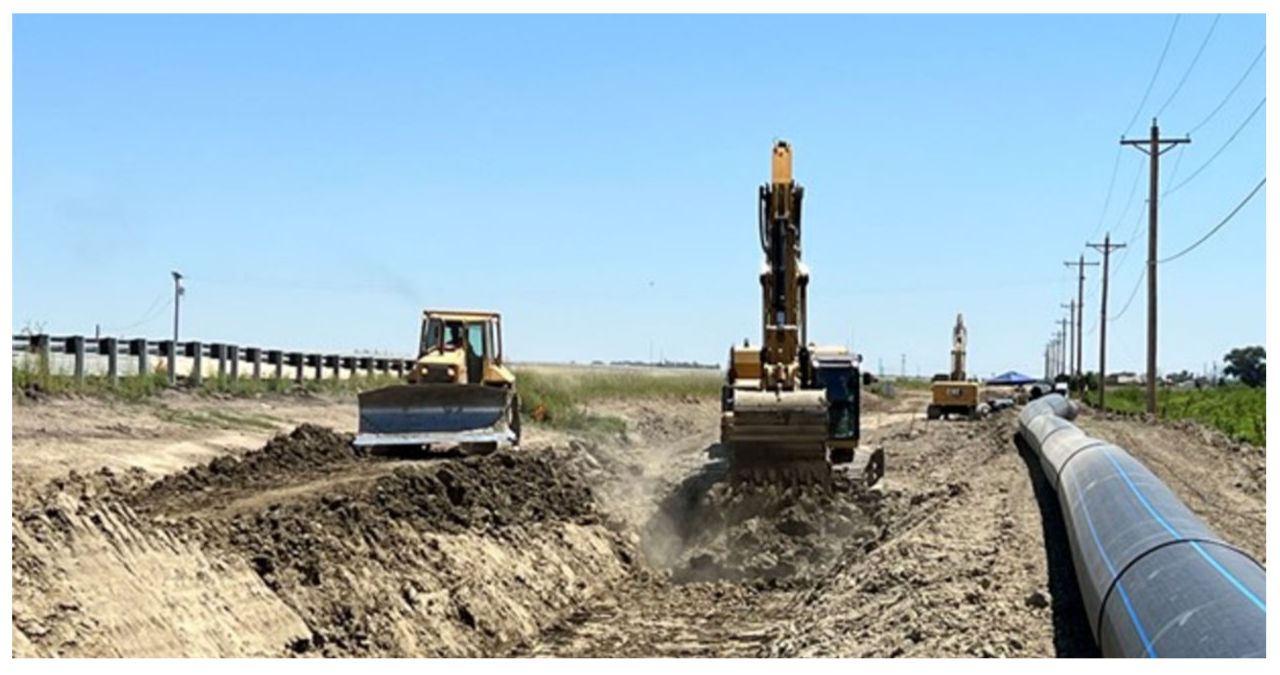Jamiesfeast – Construction is currently in progress for a long-awaited water delivery project in southeastern Colorado. Despite being 60 years overdue and receiving pledges amounting to nearly a quarter billion dollars, only less than half of the project has been funded so far.
If the pipeline system is completed successfully, it will provide drinkable water to 50,000 residents living in an area where water quality is affected by naturally occurring radioactive materials.
The water quality in the Arkansas Valley, spanning from Pueblo to Lamar, is currently experiencing significant deterioration. According to the U.S. Bureau of Reclamation, the surface water in this area is frequently contaminated with harmful organisms and pollutants. Addressing this issue poses a challenge for the affected communities, as the potential solutions, such as implementing water treatment facilities utilizing reverse osmosis, ion exchange, and filtration, or resorting to bottled water, are both costly and problematic. The agency estimates that these alternatives would surpass the $600 million budget allocated for the project.
Digging underground wells may seem like a viable solution, but it poses a significant challenge due to the presence of harmful amounts of uranium and radium. These substances belong to a class of chemicals known as radionuclides, characterized by the instability of their atomic nuclei. It is important to note that these radionuclides are naturally occurring, originating from ancient marine sediments that the river has eroded over time.
Furthermore, the existing irrigation systems have played a role in causing contamination. According to a recent study conducted in 2021, agricultural practices that rely on diverted river water and shallow wells for irrigation have resulted in the drainage of harmful sediments back into the river.
According to the study’s participants, the groundwater system’s shallow return flow eventually discharges directly into the surface flow of the Arkansas River and its tributaries.
Other downstream users are also concerned about these elements. Kansas authorities have been measuring rising levels of uranium in the Arkansas River since 2012, specifically in Coolidge, just across the Colorado state line.
In 2020, the construction of the Arkansas Valley Conduit commenced, marking an important milestone in water infrastructure development. The project received a significant boost with a $28 million appropriation from Congress, complementing the $30 million funding received by the Bureau of Reclamation in the preceding nine years.
Funding has been steadily increasing over time, with larger amounts of money being allocated to various projects.
-
- From 2021 through 2023, Reclamation funded $31.5 million for the AVC through regular appropriations.
- In 2022, the AVC received $60 million from the Bipartisan Infrastructure Law.
- In 2023, the AVC received $100 million from the Bipartisan Infrastructure Law.
In mid-January, the Colorado congressman once again pleaded with the current president to continue funding.
According to a 2016 congressional report, the project was initially projected to cost $400 million. However, the latest estimate from the Colorado Water Conservancy Board is now $600 million. This updated estimate considers the Bureau of Reclamation’s projected completion date of 2035. However, the conservancy board is optimistic that the main pipeline, known as the trunk, can be completed sooner, potentially by the end of 2028.
The trunk line is set to extend from water treatment plants located just east of Pueblo Reservoir. At its initial stage, it will have a diameter of 30 inches. Spanning a distance of 130 miles, a significant portion of the trunk will run parallel to State Highway 50. However, as it reaches Lamar, the diameter of the trunk line will decrease to 16 inches.
About 100 miles of spur line, or smaller delivery line, will directly bring water to 39 local water systems between those two points. The final designs for the spur lines are anticipated to receive approval by the end of 2024.
The construction of the trench for the trunk line commenced in the spring of last year.
The system aims to deliver an annual water supply of 7,500 acre-feet.
In 1962, the Fryingpan-Arkansas Project’s eastern portion received initial approval. This significant milestone was celebrated by President John F. Kennedy in Pueblo during the summer.
Over the course of the next 18 years, the federal government, along with its partners, successfully constructed five major dams, 22 water tunnels, 16 diversion dams, and three power plants.
The construction of lines beyond Pueblo Reservoir was abandoned when it was discovered that the local agencies were unable to fully fund the project.
The costs will be divided between the federal government and local authorities going forward. Under the current arrangement, the federal government will cover 65% of the expenses, while local and state agencies will contribute 35%. The beneficiaries of the project will then repay this 35% share over a period of 50 years.

